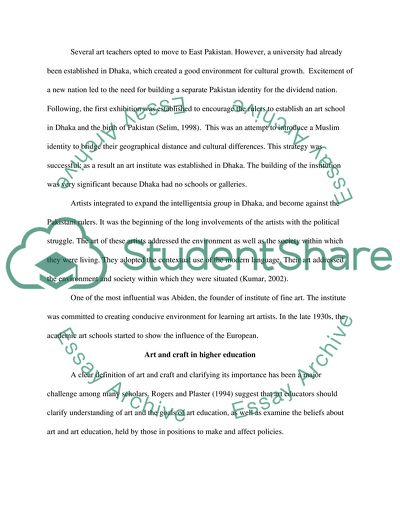Cite this document
(Higher Education of Art and Craft in Pakistan Essay Example | Topics and Well Written Essays - 2250 words, n.d.)
Higher Education of Art and Craft in Pakistan Essay Example | Topics and Well Written Essays - 2250 words. https://studentshare.org/design-technology/1860215-higher-education-of-art-and-craft-in-pakistan
Higher Education of Art and Craft in Pakistan Essay Example | Topics and Well Written Essays - 2250 words. https://studentshare.org/design-technology/1860215-higher-education-of-art-and-craft-in-pakistan
(Higher Education of Art and Craft in Pakistan Essay Example | Topics and Well Written Essays - 2250 Words)
Higher Education of Art and Craft in Pakistan Essay Example | Topics and Well Written Essays - 2250 Words. https://studentshare.org/design-technology/1860215-higher-education-of-art-and-craft-in-pakistan.
Higher Education of Art and Craft in Pakistan Essay Example | Topics and Well Written Essays - 2250 Words. https://studentshare.org/design-technology/1860215-higher-education-of-art-and-craft-in-pakistan.
“Higher Education of Art and Craft in Pakistan Essay Example | Topics and Well Written Essays - 2250 Words”. https://studentshare.org/design-technology/1860215-higher-education-of-art-and-craft-in-pakistan.


